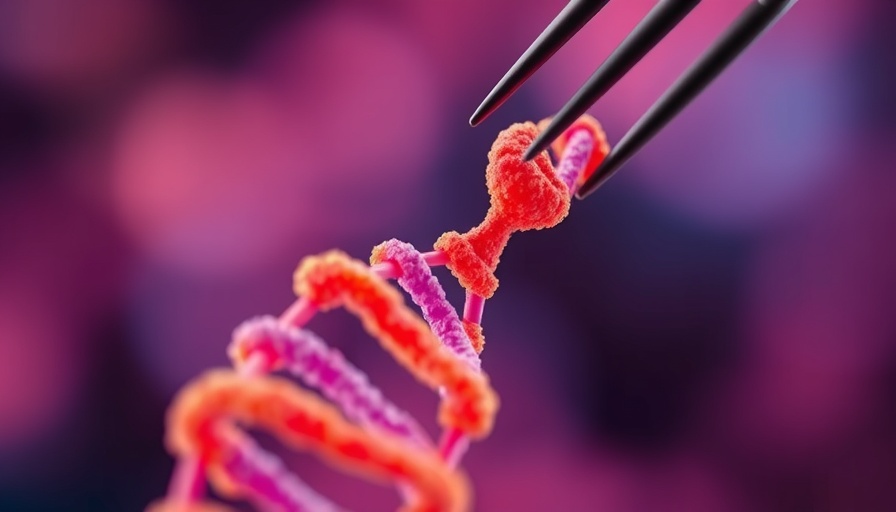
How Gene Editing is Pioneering a New Era in Rare Disease Treatment
In a groundbreaking study recently published in the New England Journal of Medicine, scientists have demonstrated the potential of custom gene editing therapies to treat genetic anomalies, particularly in infants with rare diseases. The remarkable case study of KJ Muldoon, a baby diagnosed with a severe and rare condition known as CPS1 deficiency, showcases how innovative approaches, such as CRISPR-based base editing, may provide new hope to families facing genetic disorders.
The Promise of Personalized Medicine
At its core, the breakthrough involves finely tuned gene editing techniques that aim to correct genetic errors. With more than 350 million individuals globally affected by rare diseases, the necessity for personalized treatments has never been more pressing. These disorders often have few, if any, existing treatment options, leaving affected families with limited paths to seek help. Dr. Kiran Musunuru, a gene editing expert at the University of Pennsylvania, notes the importance of this work: “This is the first step towards gene editing therapies to treat a wide variety of rare genetic disorders where definitive medical treatments are lacking.”
Decoding the Science: What Does Base Editing Entail?
Base editing diverges from earlier CRISPR methodologies by enabling scientists to correct specific genetic "letters"—the foundational components of DNA—without cutting the entire strand. This minimizes the risk of unwanted mutations, making it a safer alternative. The therapy developed for KJ utilized lipid nanoparticles to transport the editing tools directly into liver cells, providing a targeted approach that enhances the treatment's efficacy.
Overcoming Challenges in Genetic Medicine
The success story of KJ Muldoon, who received his first infusion in February 2025, illustrates a leap forward for precision medicine. Given the intricate nature of individual genetic makeups, creating a one-size-fits-all treatment strategy for rare diseases presents significant hurdles. Nonetheless, the rapid development of KJ’s custom treatment—from diagnosis to therapy—sets a new benchmark in the field. Industry experts like Senthil Bhoopalan from St. Jude Children’s Research Hospital underscore the urgency of this innovation, stating, “This really sets the pace for future developments.”
The Implications for MedSpas and Aesthetic Practices
This emerging frontier in genetic treatments beckons exciting possibilities for the aesthetic industry. MedSpa owners and managers, particularly those interested in integrating cutting-edge technology into their practices, have unique opportunities to stay ahead of the curve. As personalized medicine becomes more prevalent, there will be a growing expectation from patients for treatments that cater not only to their physical conditions but also to their genetic predispositions.
Looking Ahead: Future Trends in Gene Editing for Patients
As scientific advancements continue to unfold, so too will the landscape of therapeutic treatments in both healthcare and aesthetic medicine. The potential for gene editing to transition from laboratory to practice is vast, suggesting a future where patients might receive personalized skincare solutions tailored to their genetic profiles. The MedSpa industry stands at a crossroads where translating these innovations into reality could redefine standards of care and operational strategies.
Concluding Thoughts: Embracing Revolutionary Changes
With the rapid advancement of gene editing technology, now is the time for MedSpa managers to reconsider traditional treatment frameworks and embrace personalized healthcare solutions. This not only serves to meet growing consumer expectations but could potentially drive operational efficiencies and enhance patient satisfaction. As we witness the early victories in rare disease treatments, the possibilities for broader applications in cosmetic and therapeutic realms beckon enthusiasm and proactive engagement.
 Add Row
Add Row  Add
Add 

 Add Element
Add Element 


Write A Comment